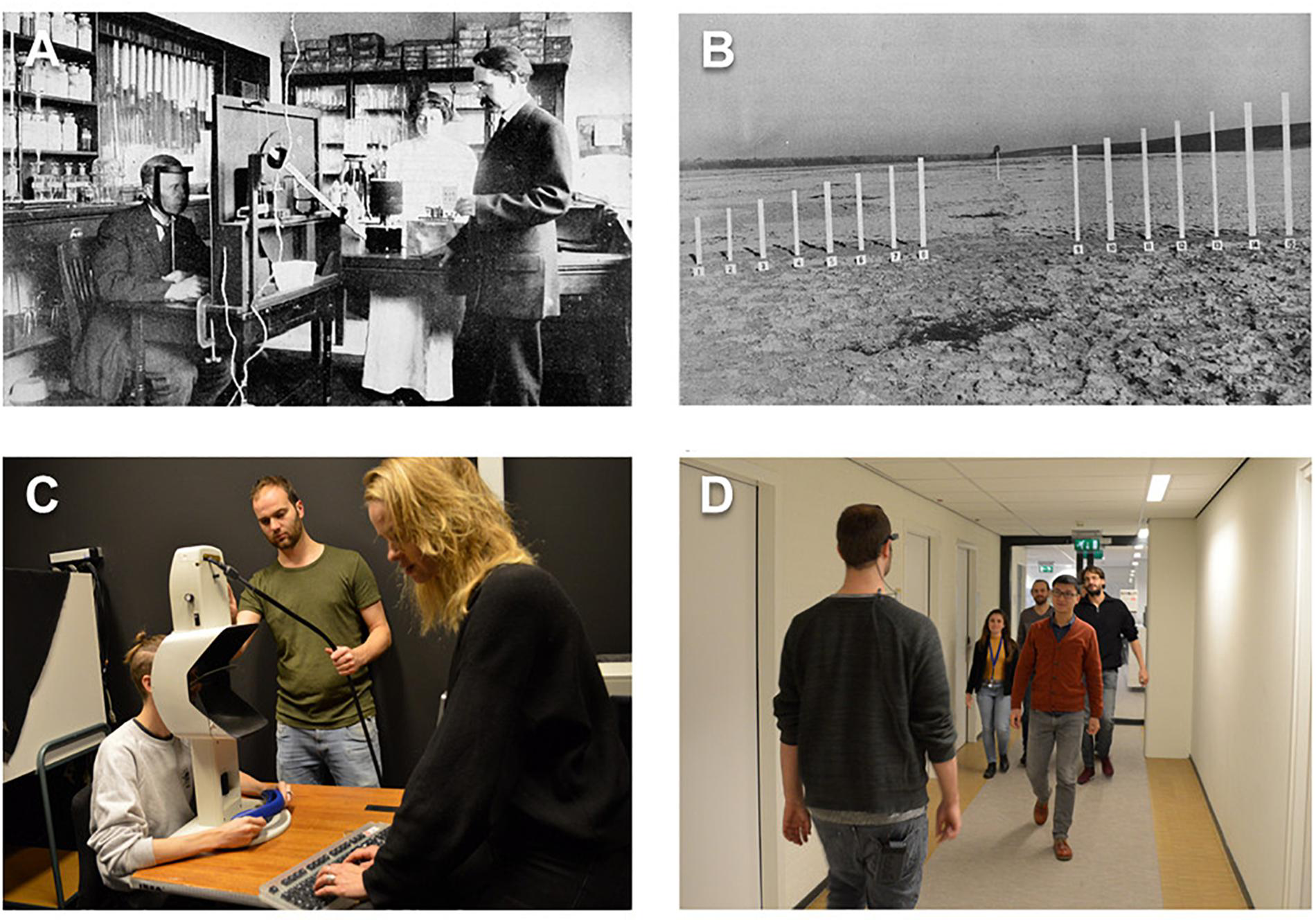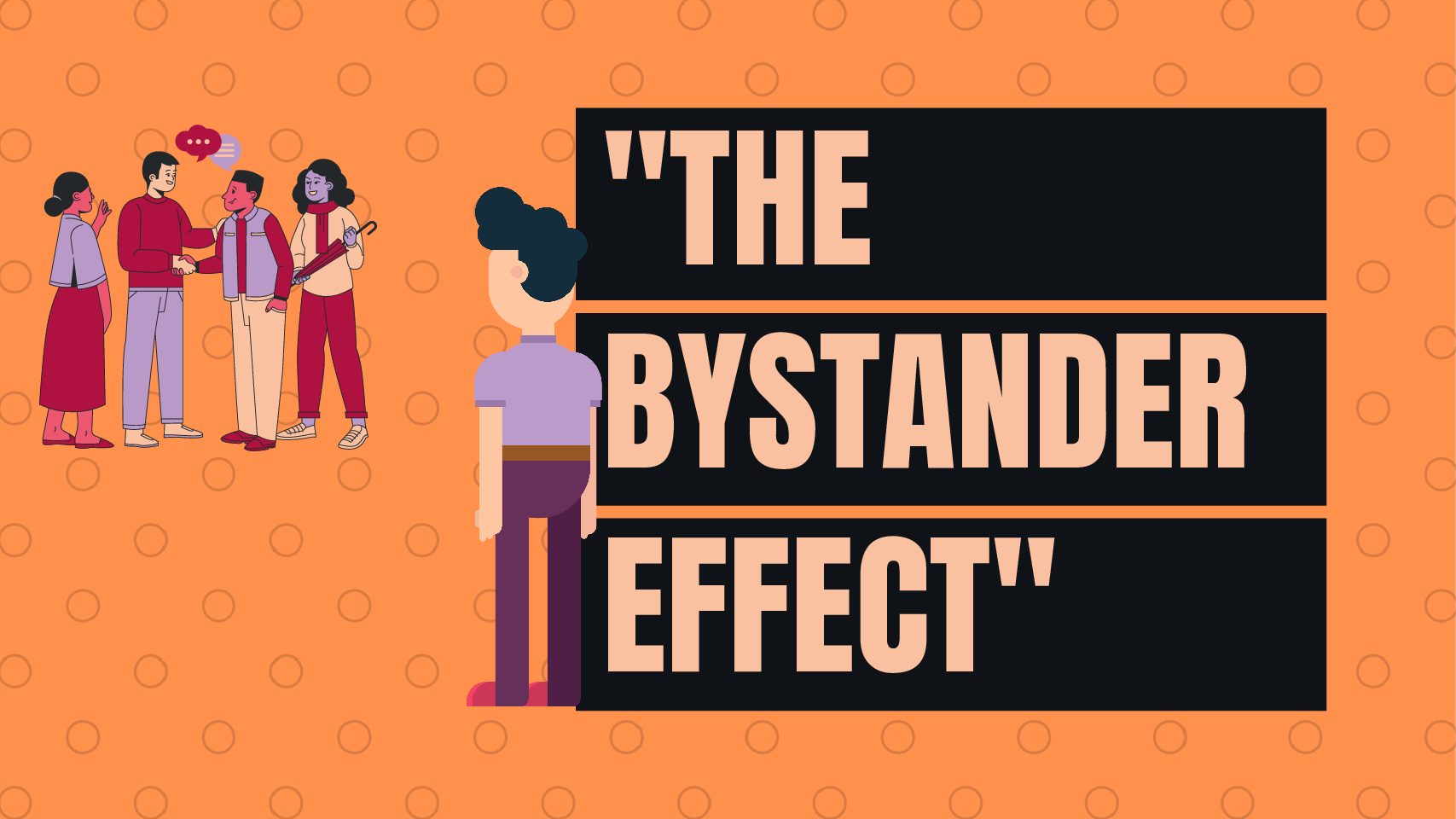Learning
Social Phenomena and Dynamics of Human Behavior
Human behavior is a complex tapestry woven by myriad threads of influences, beliefs, norms, and experiences. The study of social phenomena is an exploration into the intricate dynamics that shape how we interact, communicate, and make decisions within our societal frameworks.
From conformity and obedience to group polarization and cultural diffusion, these phenomena provide a window into understanding the multifaceted nature of human behavior. In this article, we delve into some intriguing social phenomena, unraveling their significance and shedding light on their impact on our lives.
Conformity: The Silent Force of Human Behavior
Conformity is a fascinating social phenomenon that explores our tendency to adjust our beliefs, attitudes, and behaviors to align with those of a larger group. As social creatures, we often seek acceptance and avoid standing out, leading us to change our views to match those of the majority.
Famous experiments like Solomon Asch’s line length experiment highlight the powerful sway of conformity, revealing how individuals may knowingly provide incorrect answers to fit in with the group’s consensus. Understanding conformity can shed light on societal norms, peer pressure, and the balance between individuality and collective identity.

Groupthink: The Danger of Consensus
Groupthink is a phenomenon that occurs when a desire for harmony within a group overrides rational thinking and critical analysis. In such scenarios, group members prioritize maintaining cohesion over making well-informed decisions.
The disastrous decision-making that led to the NASA Challenger and Columbia space shuttle accidents serves as a grim reminder of the pitfalls of groupthink. Recognizing the signs of groupthink can help organizations foster an environment that encourages diverse perspectives and constructive dissent.
Bystander Effect: The Diffusion of Responsibility
The bystander effect is a perplexing behavior observed when individuals are less likely to offer assistance to someone in need when others are present. The diffusion of responsibility within a group can lead to a phenomenon where each individual assumes someone else will take action.
The murder of Kitty Genovese in 1964 brought this phenomenon to public attention, prompting psychologists to explore why people might not intervene in emergencies. By comprehending the bystander effect, we can work towards creating a society that promotes empathy and active intervention.
Cognitive Dissonance: Striving for Internal Harmony
Cognitive dissonance is the psychological discomfort we experience when we hold contradictory beliefs or engage in behaviors that conflict with our values. In order to alleviate this discomfort, we tend to modify our beliefs or rationalize our actions.
The classic example is the smoker who knows the dangers of smoking but continues the habit, convincing themselves that the risks are overstated. Studying cognitive dissonance unravels the complexities of our internal thought processes and reveals how we navigate the delicate balance between our attitudes and actions.
Cultural Diffusion: The Global Exchange
Cultural diffusion, the spread of cultural beliefs, practices, and ideas from one society to another, is a phenomenon deeply intertwined with globalization and technological advancements. From cuisine and fashion to language and art, our world is a tapestry of interconnected cultures.
The rise of social media has accelerated the exchange of ideas and customs, leading to both enrichment and potential challenges to cultural identity. Embracing cultural diffusion while preserving cultural authenticity requires navigating a delicate balance.

Conformity: The Silent Force
Conformity can manifest in various forms, such as normative conformity and informational conformity. Normative conformity occurs when individuals conform to the group’s expectations to avoid rejection or gain social approval. Informational conformity, on the other hand, happens when individuals believe the group’s perspective is accurate and thus adjust their beliefs to align with it.
Studies like Stanley Milgram’s obedience experiments further illustrate the complexity of conformity. Milgram’s work demonstrated how individuals could be compelled to engage in seemingly harmful actions under the influence of authority figures. This insight into conformity’s reach emphasizes the extent to which we can be swayed by external pressures.
Groupthink: The Danger of Consensus
Groupthink often arises in cohesive groups where a strong desire for unity suppresses diverse viewpoints. Symptoms of groupthink include the illusion of invulnerability, self-censorship, and a collective rationalization of decisions. Irving Janis, who coined the term, identified the Kennedy administration’s handling of the Bay of Pigs invasion as a classic example of groupthink.
Preventing groupthink involves promoting open dialogue, encouraging dissent, and appointing a devil’s advocate to challenge prevailing opinions. By valuing critical thinking and encouraging the exploration of alternatives, organizations can mitigate the risks associated with this phenomenon.
Bystander Effect: The Diffusion of Responsibility
The bystander effect is often attributed to the diffusion of responsibility, where individuals believe that others will take action, leading to inaction by all. However, the size of the group and the perceived competence of bystanders can influence whether the effect occurs. The more people present, the less likely each individual is to intervene.
The Kitty Genovese case highlighted the psychological barrier to intervention, but subsequent research has shown that intervention is more likely when individuals perceive the situation as an emergency and feel a personal connection to the victim. Public awareness campaigns, such as teaching the “five-step” intervention process (Notice, Interpret, Assume responsibility, Know how to help, and Take action), can play a pivotal role in counteracting the bystander effect.
Cognitive Dissonance: Striving for Internal Harmony
Cognitive dissonance theory, formulated by Leon Festinger, suggests that individuals seek consistency in their beliefs and actions to avoid discomfort. To resolve dissonance, people might downplay the importance of conflicting information or convince themselves that their choices were the right ones.
Cognitive dissonance can have profound effects on decision-making and behavior change. Advertisers and marketers often use cognitive dissonance strategies to encourage consumers to align their actions with their messages. Recognizing this phenomenon can empower individuals to critically assess their motivations and make choices aligned with their true values.

Cultural Diffusion: The Global Exchange
Cultural diffusion has played a vital role in shaping civilizations throughout history. The Silk Road, for example, facilitated the exchange of goods, ideas, and cultures between East and West. In today’s world, technological advancements and the internet have accelerated cultural diffusion, leading to the rapid spread of trends, languages, and beliefs.
While cultural diffusion promotes diversity and mutual enrichment, it also raises questions about cultural appropriation and identity preservation. Striking a balance between celebrating cultural exchange and respecting the origins of traditions is essential to ensure that globalization doesn’t lead to the erasure of cultural uniqueness.
Conformity: The Silent Force
Conformity doesn’t always have negative connotations. It can serve as a mechanism for social cohesion and cooperation. When individuals conform to shared norms and values, it contributes to the stability of societies. However, blind conformity can also perpetuate harmful practices, such as discrimination or unethical behavior. Understanding the balance between positive and negative aspects of conformity helps us harness its power for the greater good.
Recent advancements in social psychology have examined the role of cultural influences on conformity. Cross-cultural studies have shown that the level of conformity varies across cultures due to differences in values, social structures, and individualistic versus collectivist orientations. This highlights the importance of considering cultural context when analyzing conformity behaviors.
Groupthink: The Danger of Consensus
Groupthink can lead to disastrous consequences, but the dynamics of a group can also foster innovation and creative problem-solving. High levels of trust and mutual respect within a group can encourage members to freely share ideas, leading to novel solutions. Recognizing the line between constructive collaboration and detrimental groupthink is key to maximizing the potential of group interactions.
Leadership plays a critical role in preventing groupthink. A leader who values dissent and encourages open debate can create an environment where diverse opinions are welcomed. Additionally, techniques like scenario planning, where groups explore multiple potential outcomes, can help break down the echo chamber effect that often accompanies groupthink.

Bystander Effect: The Diffusion of Responsibility
Research into the bystander effect has evolved beyond traditional laboratory settings to real-world scenarios. The “Latane and Darley model” suggests that bystander intervention depends on noticing the incident, interpreting it as an emergency, assuming responsibility, and possessing the knowledge and skills to help. Each of these steps can be influenced by factors such as the urgency of the situation and the presence of others.
In the phenomenon of interest, the rise of social media has given birth to digital bystanders, wherein individuals observe harmful behaviors or crises online without taking action, underlining the continued relevance of the bystander effect and the importance of fostering active engagement and support in digital communities.
Cognitive Dissonance: Striving for Internal Harmony
Cognitive dissonance can be a catalyst for personal growth and change. When individuals experience dissonance between their attitudes and behaviors, they might be motivated to align their actions with their beliefs. This internal conflict can lead to introspection and self-improvement, driving individuals to make more ethical and consistent choices.
Understanding cognitive dissonance can also have implications for education and communication. Presenting well-reasoned arguments and evidence can lead to cognitive dissonance in individuals who hold opposing views. Crafting messages that encourage critical thinking and self-reflection can be a powerful strategy for promoting positive behavior change.
Cultural Diffusion: The Global Exchange
Cultural diffusion doesn’t solely occur through direct interactions between cultures. Media, including movies, music, and literature, can also facilitate the spread of cultural norms and ideas. For instance, the influence of K-pop on global music preferences or the impact of Hollywood on fashion trends demonstrates the role of media in cultural diffusion.
The balance between cultural preservation and adaptation is an ongoing dialogue. Many indigenous communities strive to protect their traditions from being diluted or misrepresented by outside influences. Governments, organizations, and individuals need to collaborate to ensure that cultural diffusion respects the autonomy and heritage of communities while fostering mutual understanding.
Conclusion
Exploring the complexities of social phenomena takes us on a journey through the intricate web of human behavior, psychology, and society. These phenomena offer insights into how we interact, adapt, and shape our world.
By acknowledging the nuances and evolving nature of these dynamics, we become better equipped to navigate the challenges and opportunities that arise in our interconnected global community. As we continue to delve into the depths of social phenomena, we embark on a continuous quest to decode the mysteries of human behavior and pave the way for a more harmonious and enlightened future

Learning
First-Time Buyer’s Guide to the UK Property Market

Entering the UK property market as a first-time buyer can feel both exciting and daunting. The process is filled with potential pitfalls and complex decisions, but with the right guidance, it can be navigated smoothly. The estate agents in Yorkshire demystify the journey from the initial decision to buy a home to the moment you step over the threshold of your new property.
Understanding Your Financial Position
The first and perhaps most crucial step in the home-buying process is understanding your financial situation. This includes assessing your savings, income, and current debts. Here’s how you can prepare:
1. Deposit: Generally, you’ll need at least 5% of the property price as a deposit, though aiming for 10% or more can provide better mortgage rates.
2. Income and Expenses: Use a budget planner to assess your monthly income against your expenses. This will help you understand how much you can afford in monthly mortgage repayments.
3. Credit Score: Lenders will evaluate your credit score to determine your mortgage eligibility. So it’s important to have a good credit score, and you should work on it if required.
4. Mortgage Options: Speak to a mortgage advisor to understand different types of mortgages, such as fixed-rate, variable-rate, and help-to-buy schemes.
Getting a Mortgage Agreement in Principle
A Mortgage Agreement in Principle (AIP) is a statement from a lender indicating how much they’ll likely lend you. You will be a more attractive buyer with an AIP as it shows sellers you’re serious and financially prepared.
Deciding What You Want
Before you start viewing properties, it’s essential to know what you’re looking for. Consider the following factors:
1. Location: Proximity to work, schools, public transport, and amenities are key. Research neighbourhoods to find the best fit for your lifestyle.
2. Property Type: Decide whether you want a flat, terraced house, semi-detached, or detached property. Each has its pros and cons.
3. Must-Haves: Make a list of non-negotiables, such as the number of bedrooms, garden size, and parking facilities.
4. Future Proofing: Consider your future needs. Are you planning to start a family? Do you need space for a home office?
Starting the Property Search
With a clear idea of what you’re looking for, you can begin your property search. Here are some tips:
1. Use Online Portals: Websites like Rightmove, Zoopla, and OnTheMarket are excellent starting points. Set up alerts to get notified of new listings that meet your criteria.
2. Visit Estate Agents: Register with local estate agents who can provide insights into the market and inform you of new properties before they’re listed online.
3. Attend Viewings: Don’t rush this part. Visit several properties to get a feel for what’s available in your price range.
Making an Offer
Once you find a property you love, it’s time to make an offer. Here’s how to approach it:
1. Research: Check the selling prices of similar properties in the area to gauge a fair offer.
2. Negotiate: Don’t be afraid to negotiate. The starting point is most usually the asking price.
3. Conditions: You might include conditions in your offer, such as the inclusion of certain fixtures or a specific moving date.
The Legal Process
If your offer is accepted, the legal process begins. You’ll need a solicitor or licensed conveyancer to handle the legalities. Here’s what to expect:
1. Conveyancing: This is the legal transfer of property ownership. Your solicitor will handle this, including conducting searches, dealing with the Land Registry, and transferring the funds.
2. Surveys and Inspections: Arrange for a property survey to check for structural issues. There are different types of surveys, from basic condition reports to full structural surveys.
3. Mortgage Finalisation: Once the survey is complete and satisfactory, your mortgage can be finalised.
4. Exchange of Contracts: This is when the sale becomes legally binding. You’ll pay your deposit at this stage.
5. Completion: On the agreed completion date, the remaining money is transferred, and you receive the keys to your new home.
Moving In
Moving day can be hectic, but planning can ease the stress:
1. Hire a Removal Company: Book a reliable removal company well in advance. Discover the best deals by getting quotes from multiple companies.
2. Pack Strategically: Label your boxes by room and keep essential items accessible.
3. Notify Utilities and Change Address: Inform your utility providers of your move date and update your address with banks, the DVLA, and other important institutions.
Settling In
Get settled. Introduce yourself to the neighbours, familiarise yourself with the local area, and really start to make the place your own.
Here are a few final tips:
1. Safety Checks: Make sure that your smoke alarms and carbon monoxide detectors are working, and make sure that you know where the gas and electricity meters are located.
2. Maintenance Plan: Keep a record of the smooth functioning of your new home with a maintenance schedule, complete with regular checks and seasonal tasks.
3. Personal Touches: Add personal touches to make the space feel like home. This can be from putting up family photos or redoing the decoration in your rooms.
Conclusion
Buying your very first home in the UK is most definitely a milestone, difficult and full of challenges but rewarding in the end. Such a philosophy guides you in understanding finances and knowing what you want to achieve from detailed research, and seeking professional advice that confidently helps you navigate the property market. Yes, the journey may have its hurdles, but in the end—owning your own home—the reward will be worth the effort. Welcome to your new chapter!
SEE ALSO: Conquer the Chaos: Hacks to Clean Your Home in Half the Time
Learning
5 Health Benefits of Regular Pedicures

There’s nothing quite like a pedicure to keep your feet looking and feeling their best, but did you know that pedicures do more than simply enhance the appearance of your feet? Many people don’t realize that regular pedicures can come with a wide range of health benefits that can promote the well-being of your feet, so here are some ways that your routine pedicure keeps both your toenails and feet in the best condition possible!
Smoother Skin
One of the biggest misconceptions about pedicures is that they only cater to and look after your toenails. While you’ll definitely be leaving each session with a fresh coat of nail polish, your pedicure can also do wonders for the health of your skin. Aside from trimming and shaping your nails and cuticles, you’ll notice that your nail technician also dedicates a few steps to the skin of your feet.
After inspecting your feet and looking for any issues or imperfections that may need to be addressed, your technician will work on an exfoliating scrub to remove any dead skin cells. This step may also be aided by a foot file, which can be used to buff away any calluses and other problem areas manually.
Softer Skin
After your nail technician addresses all the problem areas of your feet and removes any unwanted dead skin cells, he or she will often massage in a moisturizing product, such as lotion, cream, or butter, to ensure that your skin is properly moisturized. These products contain skin-loving ingredients that will ensure that your feet have everything they need to look and feel their best so that you can walk out of your pedicure with a renewed sense of confidence.
Healthier Nails
After your pedicure session, your nails will not only look better due to the fresh coat of nail polish, but they’ll also be healthier and stronger. This is because your nail technician takes their time to ensure that your nails are properly looked after through steps that include deep cleaning, nail trimming, nail filing, and cuticle care. All of these things work together to prevent issues like ingrown nails from occurring, all the while improving the appearance of your nails.
Increased Blood Circulation
While the specific steps included in your pedicure will depend on the beauty salon, most pedicures will have a massage step somewhere in the mix. One of the often overlooked benefits of these massages is the increased blood circulation, which can deliver more nutrients and oxygen to your feet and nails, promoting their health and appearance. Aside from that, better blood flow means reduced tension and soreness, as well as better distributed heat throughout your body.
Reduced Infections
A significant amount of dirt and bacteria can build up on your feet without you even realizing it, but pedicures can be a great way to prevent these from happening in the first place. The exfoliation step of a pedicure removes dead skin cells as well as all the debris that may have accumulated underneath, and the deep cleaning of your toenails and cuticles also gets rid of any impurities that may have slipped beneath them, which can stop infections from happening.
These are some of the many health benefits that you can look forward to at your next pedicure appointment. However, it’s worth noting that you need to book regular sessions to truly reap all the rewards. This can be difficult, especially when you don’t feel like driving to your nearest nail salon after a long day, but the good news is that you can enjoy the salon experience in the comfort of your own home with a home pedicure service.
Learning
Commercial Boiler Installation Services London

For businesses in the bustling city of London, having a reliable heating system is crucial. Whether you’re opening a new office, expanding your current premises, or simply upgrading an outdated system, commercial boiler installation services for businesses in London are essential to ensure your operations run smoothly and efficiently. Proper installation and maintenance of commercial boilers can make a significant difference in energy efficiency, cost savings, and the overall comfort of your workspace.
The Importance of Professional Installation
When it comes to installing a commercial boiler, professional expertise is paramount. Here’s why:
- Efficiency and Performance: Professional installation ensures that your boiler operates at peak efficiency, reducing energy consumption and lowering utility bills. A well-installed boiler can effectively meet the heating demands of your business without unnecessary energy waste.
- Safety: Commercial boilers are complex systems that require precise installation to operate safely. Professional installers adhere to stringent safety standards and regulations, minimizing the risk of accidents and ensuring the safety of your employees and premises.
- Compliance with Regulations: Commercial properties are subject to various building codes and regulations. Professional installers are well-versed in these requirements and ensure that your boiler system complies with all local laws and standards.
- Longevity and Reliability: Proper installation is critical to the longevity and reliability of your boiler. A professional installation can prevent common issues such as leaks, pressure problems, and system failures, ensuring that your boiler runs smoothly for years to come.
Key Considerations for Commercial Boiler Installation
When planning for a commercial boiler installation, several factors need to be considered:
- Type of Boiler: The type of boiler you choose will depend on your business’s specific needs. Options include gas boilers, oil boilers, and electric boilers, each with its own set of advantages. Consulting with a professional can help you determine the best choice for your business.
- Sizing and Capacity: The boiler’s size and capacity must match the heating demands of your commercial space. An undersized boiler will struggle to meet your needs, while an oversized one will lead to inefficiencies and higher costs.
- Location: The placement of your boiler affects its efficiency and accessibility for maintenance. Professional installers can help you choose the optimal location for your boiler.
- Integration with Existing Systems: If you’re upgrading or replacing an existing boiler, it’s essential to ensure compatibility with your current heating system. Professional installers can seamlessly integrate the new boiler with your existing setup.
Choosing the Right Installation Service

Selecting the right installation service provider is crucial to the success of your boiler installation project. Consider the following when making your choice:
- Experience and Expertise: Look for a provider with a proven track record in commercial boiler installations. Experienced installers can handle the complexities of commercial systems and provide high-quality workmanship.
- Reputation: Check reviews and testimonials from previous clients to gauge the provider’s reliability and customer satisfaction.
- Comprehensive Services: Choose a provider that offers a full range of services, including installation, maintenance, and repair. This ensures that all your boiler needs are met by a single, trusted source.
In London, ROWLEN is a reputable name known for delivering top-notch commercial boiler installation services. Their team of experts is dedicated to providing efficient, safe, and compliant installations tailored to the unique needs of businesses.
Conclusion
Investing in professional commercial boiler installation services for businesses in London is essential for ensuring efficiency, safety, and long-term reliability. By choosing an experienced and reputable service provider like ROWLEN, you can rest assured that your heating system will be installed correctly and maintained to the highest standards. Proper installation not only enhances the performance of your boiler but also contributes to the overall comfort and productivity of your business environment.
SEE ALSO:
-

 News4 years ago
News4 years agoLet’s Know About Ultra High Net Worth Individual
-
Entertainment2 years ago
Mabelle Prior: The Voice of Hope, Resilience, and Diversity Inspiring Generations
-
News11 years ago
Enviromental Groups Tell Mekong Leaders Lao Dam Evaluation Process Flawed
-

 Health4 years ago
Health4 years agoHow Much Ivermectin Should You Take?
-

 Tech3 years ago
Tech3 years agoTop Forex Brokers of 2023: Reviews and Analysis for Successful Trading
-

 Lifestyles3 years ago
Lifestyles3 years agoAries Soulmate Signs
-

 Entertainment3 years ago
Entertainment3 years agoWhat Should I Do If Disney Plus Keeps Logging Me Out of TV?
-

 Health3 years ago
Health3 years agoCan I Buy Ivermectin Without A Prescription in the USA?